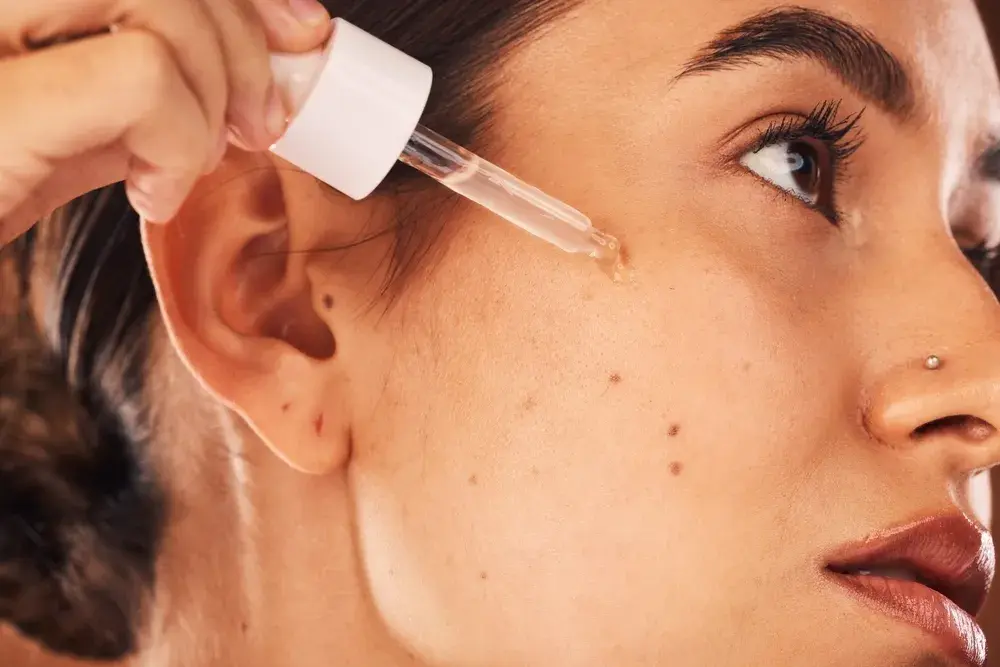What Is Retinol?
Retinoids are vitamin A-based ingredients that promote skin surface turnover, which can improve your skin's appearance in many ways. Retinol is one of the milder retinoids, and it's available in many over-the-counter skincare products. It's mainly used to help improve skin texture and even skin tone.
While they sound similar, retinol is distinct from retinoic acid, another form of vitamin A commonly known as tretinoin (another retinoid).
What Are the Uses of Retinol?
So, what is retinol used for? As you age, your skin tends to thin out and your collagen and elastin levels decline. Combined with external factors, like sun damage and smoking, this natural decline leads to wrinkles, rough texture and other visible signs of skin aging. By promoting skin surface turnover, retinol encourages skin cell growth and reproduction, which helps thicken your skin's top layer (epidermis). Retinol also stimulates your skin's natural collagen and hyaluronic acid production, which supports plump, hydrated, healthier-looking skin.
Retinol is well loved for its relative tolerability and host of skin-boosting benefits. The benefits of retinol include:
Reduce the appearance of fine lines and wrinkles
Address dark spot issues
Promote even skin tone
Minimize the appearance of pores
Plump and smooth skin
Side Effects
While retinol is one of the milder retinoids available, some people experience side effects, such as:
Dryness
Itching
Peeling
Redness
Side effects usually resolve as your skin adjusts. Consult your dermatologist for advice if you experience extreme discomfort or if side effects don't resolve after four weeks of use (and keep reading to find out how to minimize irritation!).
Where Does Retinol Come From?
Retinol comes from vitamin A. The discovery of vitamin A in skincare goes back to World War I when researchers linked vitamin A deficiency to skin conditions like xerosis (clinically dry skin) and follicular hyperkeratosis (skin thickening). In 1968, the retinoid drug project was initiated to chemically synthesize vitamin A compounds. The project's goal was to improve safety and efficacy and make retinoids more widely available.
Today, you can find retinol in many over-the-counter skincare products.
How To Incorporate Retinol Into Your Skincare Routine
Start With a Low Concentration
When introducing retinol into your skincare routine, start with products intended for beginners. Easing in can help reduce the likelihood that you'll experience symptoms like redness, dryness and irritation.
Use in the Evening
Retinol increases sun sensitivity, meaning you're more likely to burn when exposed to the sun while using products with this ingredient. So, apply retinol as part of your evening routine.
In the morning, apply a broad-spectrum sunscreen with SPF 30 or higher — and wear a hat! — to reduce your risk of sun damage.
Apply to Clean Skin
Apply a pea-sized dollop of retinol to clean, dry skin. Wait at least 10 minutes to allow it to absorb before layering on your favorite serum and moisturizer. To help minimize dark spots and support a bright, balanced complexion, try Neutrogena® Rapid Tone Repair Retinol + Vitamin C Dark Spot Corrector.
Combine With a Moisturizer
Applying retinol with a moisturizer that contains hydrating ingredients, like hyaluronic acid or glycerin, can help counteract potential side effects like dryness and peeling. Make it easy with a formula like Neutrogena® Rapid Wrinkle Repair® Regenerating Anti-Wrinkle Retinol Cream + Hyaluronic Acid. This nourishing cream hydrates, rejuvenates and reveals younger-looking skin after just one week.
Apply to Your Neck
Neck wrinkles are a common sign of skin aging. A recent study discovered that retinol effectively reduces the appearance of neck wrinkles, so don't skip this region! Work your way up to a serum like Neutrogena® Rapid Wrinkle Repair® Retinol Pro+ Power Serum to improve skin firmness and elasticity and reduce the look of fine lines and wrinkles.
Mix Wisely
Using some ingredients — including salicylic acid, benzoyl peroxide, and alpha and beta hydroxy acids — at the same time as retinol can increase your risk of irritation. Use these ingredients at different times of day, go slow and pay attention to your skin.





